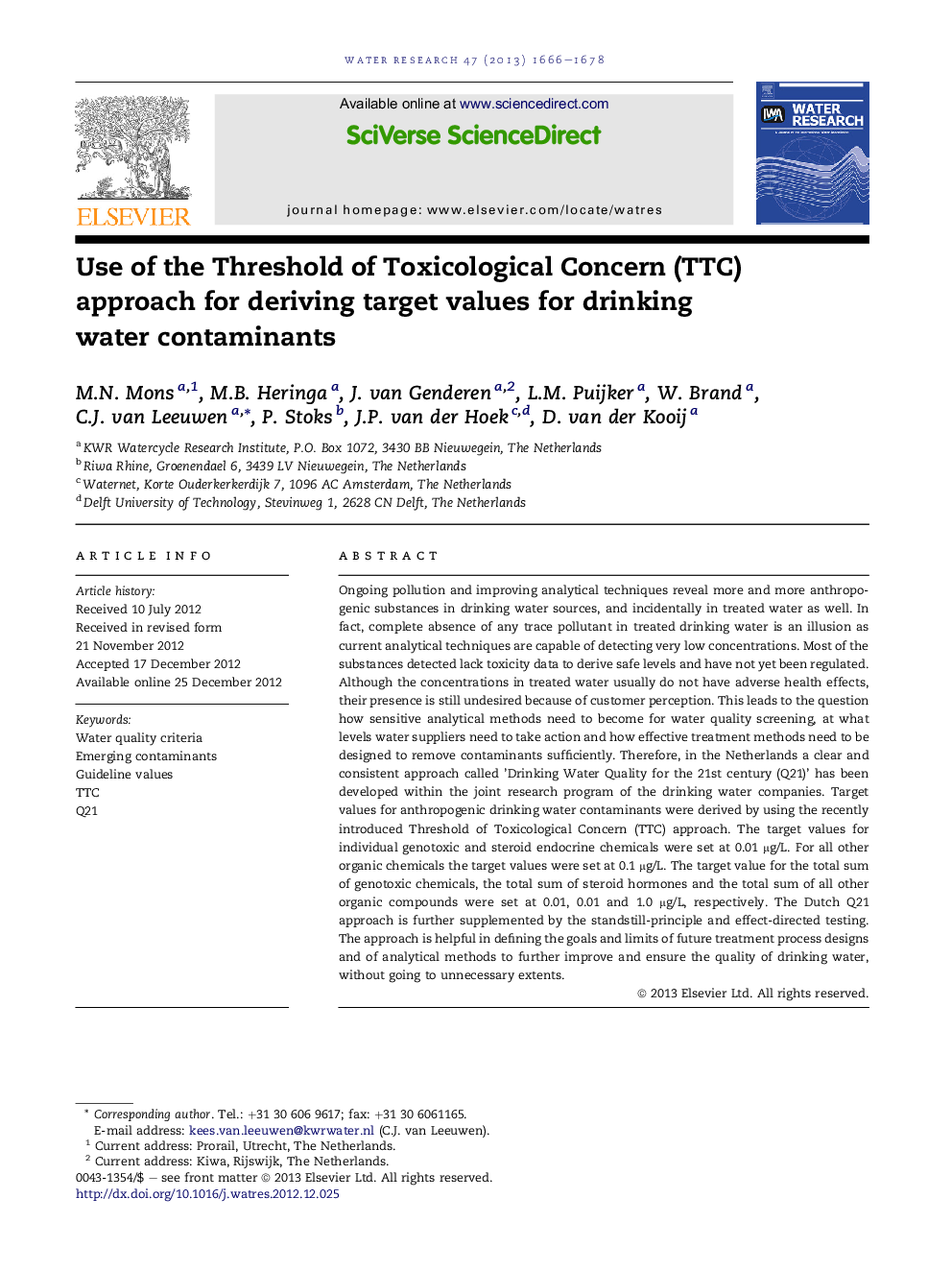| کد مقاله | کد نشریه | سال انتشار | مقاله انگلیسی | نسخه تمام متن |
|---|---|---|---|---|
| 4482157 | 1316849 | 2013 | 13 صفحه PDF | دانلود رایگان |

Ongoing pollution and improving analytical techniques reveal more and more anthropogenic substances in drinking water sources, and incidentally in treated water as well. In fact, complete absence of any trace pollutant in treated drinking water is an illusion as current analytical techniques are capable of detecting very low concentrations. Most of the substances detected lack toxicity data to derive safe levels and have not yet been regulated. Although the concentrations in treated water usually do not have adverse health effects, their presence is still undesired because of customer perception. This leads to the question how sensitive analytical methods need to become for water quality screening, at what levels water suppliers need to take action and how effective treatment methods need to be designed to remove contaminants sufficiently. Therefore, in the Netherlands a clear and consistent approach called ’Drinking Water Quality for the 21st century (Q21)’ has been developed within the joint research program of the drinking water companies. Target values for anthropogenic drinking water contaminants were derived by using the recently introduced Threshold of Toxicological Concern (TTC) approach. The target values for individual genotoxic and steroid endocrine chemicals were set at 0.01 μg/L. For all other organic chemicals the target values were set at 0.1 μg/L. The target value for the total sum of genotoxic chemicals, the total sum of steroid hormones and the total sum of all other organic compounds were set at 0.01, 0.01 and 1.0 μg/L, respectively. The Dutch Q21 approach is further supplemented by the standstill-principle and effect-directed testing. The approach is helpful in defining the goals and limits of future treatment process designs and of analytical methods to further improve and ensure the quality of drinking water, without going to unnecessary extents.
Figure optionsDownload high-quality image (212 K)Download as PowerPoint slideHighlights
► Complete absence of any trace pollutant in treated drinking water is an illusion.
► Most organic substances detected lack toxicity data to derive safe levels.
► Therefore, TTC-based target values for organic contaminants are proposed.
► These target values correspond well with most current standards.
► Useful for quality evaluations and future plans of drinking water utilities.
Journal: Water Research - Volume 47, Issue 4, 15 March 2013, Pages 1666–1678